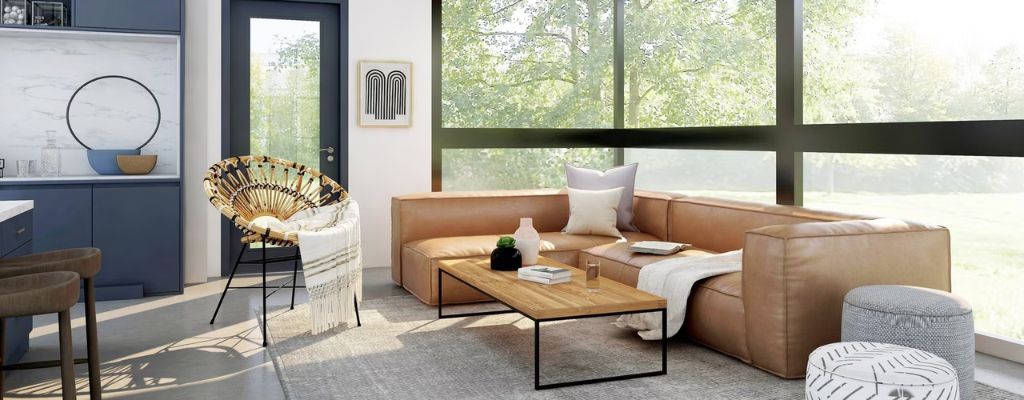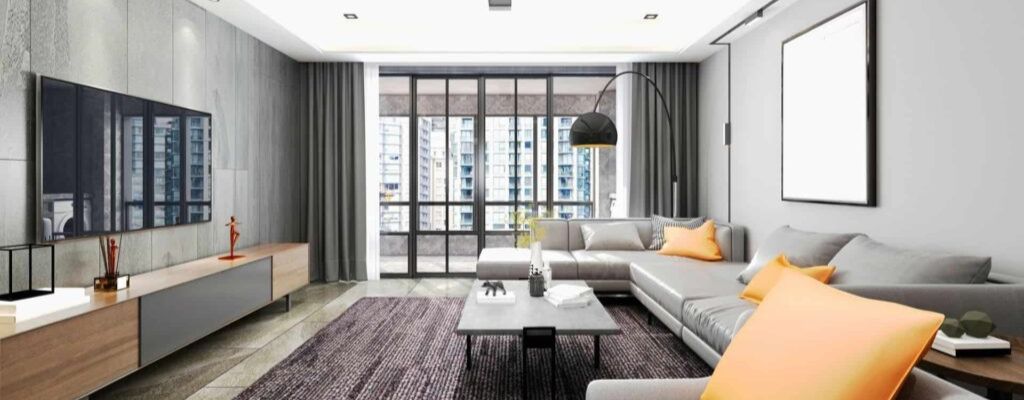8 Tips to Boost Your Home Interior Design
If you're looking for tips on how to boost your home interior design, look no further! Here are some essential tricks to help you create a stylish and functional space.
1. Start with a clear vision. Before you start any design project, be sure to have an idea of what you want your final product to look like. This will help you eliminate potential distractions and focus on the essentials.
2. Think about colors and patterns. When choosing colors and patterns for your home, it's important to keep in mind both the contemporary and classic styles that appeal to different people. For example, if you're looking for a modern look, go with lighter colors and patterns, while if you want something more traditional, go with darker colors and more muted prints or designs.
3. Use furniture strategically. You don't need an entire room full of furniture to create a great interior design scheme. Instead, use pieces strategically to add depth, dimension, and interest to your spaces. For example, place a sofa in front of awindow to let natural light flood into the room; place chairs around an open fireplace for added warmth and ambiance; or group together several pieces of art for a focal point in the room.
4. Make use of storage options. One of the best ways to increase the visual appeal of your home is by making effective use of storage options within each area of the house. Storage can be incorporated into nearly any room – including bathrooms, kitchens , and bedrooms – to create useful and attractive spaces.
5. Coordinate colors and patterns. When selecting colors and patterns for your home, it's important to coordinate them with the colors and patterns in your furniture, accessories, and other elements of the room. For example, if you have a light blue sofa and chair set, choose a bright complementary color for your walls to help tie everything together.
6. Utilize natural light. When designing your home, make sure to take advantage of natural light by incorporating window treatments or skylights into your design scheme. This will allow sunlight to flood into the room during the morning and evening hours, creating a more cheerful atmosphere.
7. accentuate positive features. One of the most effective ways to boost your interior design is by accentuating the positive features of your home – such as large windows or high ceilings – instead of hiding or covering up negative aspects. This will give your space a more unified look and make it easier to focus on the aesthetics of the room instead of fighting against distractions.
8. use furnishings as decorators instead of containers. When furnishing your home, try to use furnishings as decorative pieces rather than containers for belongings or decoration

Decorating with Style
Everyone has their own personal style when it comes to decorating their homes. However, there are some general tips that can help any homeowner achieve a look that is both stylish and functional.
When it comes to choosing furniture, one important rule to keep in mind is to select pieces that will work well with the overall color scheme of the home. For example, if the home is painted a light color, choose furniture that is also light in color. Similarly, if the home is painted a dark color, choose furniture that is darker in hue.
Another key element to consider when decorating your home is lighting. Place fixtures where they will cast the most natural light and avoid using too many artificial lights or lamps. This will help create a more inviting and comfortable atmosphere in your home.
Finally, consider adding decorative elements such as rugs or plants to add personality and life to your space. By following these simple tips, you can create a stylish interior design that will make you feel at home no matter where you are in the house!
The Basics of Interior Design
1. No two homes are the same, so it's important to tailor your interior design to reflect your unique lifestyle and personality.
2. When choosing a color scheme for your home, be sure to take into account your furniture, walls, and other focal points.
3. Keep in mind that a well-designed home can help you relax and enjoy your time spent in it!
4. To create an inviting space, use natural materials like wood, stone, or tile in place of synthetic materials.
5. When decorating a room, think about what activities or items will be taking place in it frequently—this will help you choose the right pieces of furniture and accessories.
Antique Furniture for Home Decoration
When it comes to interior design, there are a lot of choices to be made. Whether you're looking for traditional furniture or something a little more unique, antique furniture can be a great option.
While antique pieces may not be in everyone's budget, they can add an interesting and unique element to any room. Here are four tips for incorporating antique furniture into your home decor:
1. Start with the Basics: If you're just starting out with antique furniture, start with pieces that are less expensive and more common. This way, you can gradually add more expensive and rare pieces over time if you want.
2. Consider Size and Style: When choosing antique furniture, make sure to consider both the size and style of the piece. For example, some antiques are large and formal while others are smaller and more suited for a bedroom or living room.
3. Add Historical Interest: One of the best ways to add historical interest to your home is by using antique furniture from different eras. For example, if you have an early 20th century piece in your kitchen, use 1930s-era cupboards as well to create a cohesive look.
4. Work with What You Have: While it's important to have a variety of antique furniture in your home, don't feel like you need to buy everything at once. Instead, start by adding a few key pieces and see how they work together before investing in more items."
The Role of Colors in Interior Design
When designing an interior, it is important to consider the role of colors. Colors can add warmth or coolness to a space, create a sense of brightness or gloominess, and influence how people feel. Below are some tips for using color in your home decor:
-Think about the colors that are in your personality. If you're outgoing and love the bright colors of summer, use them in your home. If you're more reserved and like quieter colors during the fall and winter seasons, use those colors too.
-Consider what type of mood you want to create. Is it cheerful and happy? Or do you want a more somber atmosphere? Meditate on these questions before beginning your interior design project so that you can choose the right colors for each area of your home.
-Choose complementary colors when possible. When two different colors are placed next to each other, they will cancel each other out (unless they are very close together). For example, if you have a blue chair and red wall near it, the chair will be almost invisible because the red will overpower it. To avoid this problem, place complementary colors side by side instead of close together. This way, everyone in your home can see their favorite color without having to worry about it being overshadowed by another color.
In addition to choosing complementary colors, think about incorporating patterns into your designs as well – patterns help make rooms look larger than they actually are and give them a fresh new look every
4 Ways to Get a Great Look on a Budget
There are many ways to get a great look on a budget, and each household has different needs and priorities. Here are five tips that can help you achieve a home interior design that meets your needs without breaking the bank.
1. Start with a list of your priorities. What is most important to you in regards to your home interior design? Is it comfort, style, affordability, or all three? Once you know what matters to you most, start narrowing down your options by targeting specific themes or styles.
2. Shop for quality rather than quantity. It may be tempting to purchase more items than necessary in order to save money, but this approach will likely lead to poorer quality products that won't last as long. Save up for the pieces you really want – don’t cut corners on fixtures or flooring just because they’re cheaper alternatives.
3. Think outside the box when designing small spaces. Smaller rooms can be challenging to furnish without resorting to cheaply made furniture or wallpaper. Instead, consider using unusual accessories or decorating with large focal points that can be moved around easily if needed later on down the road.
4. Be creative when incorporating lighting into your home design. Not every room needs overhead lights; instead, try using recessed light fixtures or track lighting for a more dramatic effect. And remember: less is more when it comes to light fixture placement – go for elegant simplicity over cluttered excessiveness.

Conclusion
If you're looking to spruce up your home interior design, here are 10 tips that can help. From adding a touch of color to your walls and furniture to choosing fabrics that suit your taste and style, these tips will help you create a look that is uniquely yours. So whether you're in the early stages of designing your home or just want to update an existing space, take a look at these ideas for some inspiration.



